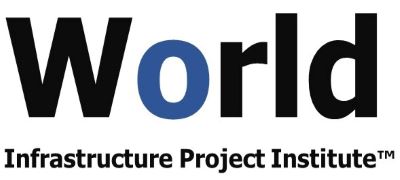Infrastructure
What Is Infrastructure?
Infrastructure is the general term for the basic physical systems of a business, region, or nation. Examples of infrastructure include transportation systems, communication networks, sewage, water, and electric systems. These systems tend to be capital intensive and high-cost investments, and are vital to a country’s economic development and prosperity.
KEY TAKEAWAYS
- Infrastructure are the basic systems that undergird the structure of the economy.
- Examples of infrastructure include transportation facilities, telecommunications networks, and water supplies.
- Large scale infrastructure is usually produced by the public sector or publicly regulated monopolies, but at smaller scales infrastructure can often be produced by private firms or through local collective action.
- As an investment, infrastructure tends to be less volatile than some other asset classes and is sometimes sought as an investment.
Understanding Infrastructure
The term infrastructure first appeared in usage in the late 1880s. The word comes from French, with infra- meaning “below” and structure meaning “building.”1 Infrastructure is the foundation upon which the structure of the economy is built, often times quite literally. In 1987, a panel of the U.S. National Research Council adopted the term “public works infrastructure” to refer to functional modes including highways, airports, telecommunications, and water supplies, as well as the combined systems that these elements comprise.2
Because infrastructure very often involves the production of either public goods or goods that lend themselves to production by natural monopolies, it is very typical to see public financing, control, supervision, or regulation of infrastructure. This usually takes the form of direct government production or production by a closely regulated, legally sanctioned, and often subsidized monopoly. At smaller scales, infrastructure can also often take on the characteristics of club goods or goods most readily produced by localized monopolies, and can be provided within the context of a private firm producing infrastructure for use within the firm or provided by localized arrangements of formal or informal collective action.
Infrastructure can be put into several different types including:
Soft Infrastructure
These types of infrastructure make up institutions that help maintain the economy. These usually require human capital and help deliver certain services to the population. Examples include the healthcare system, financial institutions, governmental systems, law enforcement, and education systems.
Hard Infrastructure
These make up the physical systems that make it necessary to run a modern, industrialized nation. Examples include roads, highways, bridges, as well as the capital/assets needed to make them operational (transit buses, vehicles, oil rigs/refineries).
Critical Infrastructure
These are assets defined by a government as being essential to the functioning of a society and economy, such as facilities for shelter and heating, telecommunication, public health, agriculture, etc. In the United States, there are agencies responsible for these critical infrastructures, such as Homeland Security (for the government and emergency services), the Department of Energy, and the Department of Transportation.
Along with the aforementioned sectors, infrastructure includes waste disposal services, such as garbage pickup and local dumps. Certain administrative functions, often covered by various government agencies, are also considered part of the infrastructure. Educational and healthcare facilities may also be included, along with specific research and development functions and necessary training facilities.
Special Considerations
IT Infrastructure
Many technical systems are often referred to as infrastructures, such as networking equipment and servers, due to the critical function they provide within specific business environments. Without the information technology (IT) infrastructure, many businesses struggle to share and move data in a way that promotes efficiency within the workplace. If IT infrastructure fails, many business functions cannot be performed.
Private Investment in Public Infrastructure
Sometimes private companies choose to invest in a country’s infrastructure development as part of a business expansion effort. For example, an energy company may build pipelines and railways in a country where it wants to refine petroleum. This investment can benefit both the company and the country.
In 2005, Skyway Concession Company entered into a 99-year lease with the City of Chicago to operate and maintain the Chicago Skyway Bridge. As part of the agreement, Skyway receives all toll and concession revenue generated by the bridge, while the city benefited from a $1.83 billion cash infusion and is no longer responsible for maintaining the bridge.1
Individuals may also choose to fund improvements to certain pieces of public infrastructure. For example, an individual may fund improvements to hospitals, schools, or local law enforcement efforts.
Infrastructure as an Asset Class
Infrastructure is also an asset class that tends to be less volatile than equities over the long term and provides a higher yield. As a result, some companies and individuals like to invest in infrastructure funds for their defensive characteristics, such as funds involved in transportation or water infrastructure.
